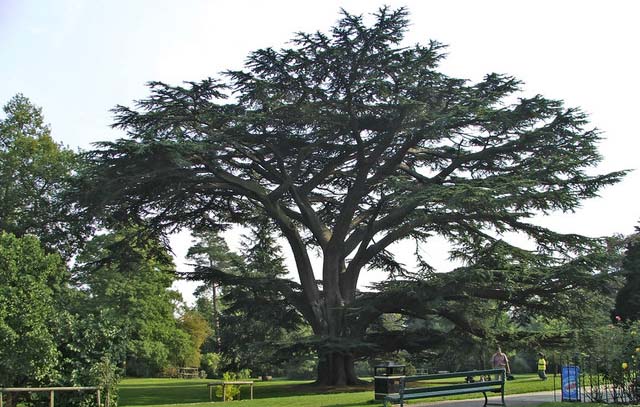 From an NPR report entitled Climate Change Closes In On Lebanon’s Iconic Cedar Trees
From an NPR report entitled Climate Change Closes In On Lebanon’s Iconic Cedar Trees
The cedar tree is a source of national pride in Lebanon. Its distinctive silhouette of splayed branches graces the national flag. The forests here have furthered empires, providing Phoenicians with timber for their merchant ships, and early Egyptians with wood for elaborately carved sarcophagi.
For some reason, NPR mention the Phoenicians and ancient Egyptians, yet omit the Israelites, even though the Cedar is mentioned about 75 times in Jewish scripture.
Various were the uses to which cedar was put in Biblical times. It was used by Solomon in building the Temple (I Kings vi. 18), the inside of which was all of cedar, no stone being visible. On the outside, also, cedar was used (I Kings vii. 12). The altar was made of the same wood (I Kings vi. 20). Later on it was employed in building the Second Temple (Ezra iii. 7). From Ezek. xvxii. 5 it is clear that cedar was used in the making of masts. In religious service it was used in cleansing the leper (Lev. xiv. 4, 49, 51, 52) and in the ceremony of the Red Heifer (Num. xix. 6).
It is natural to find so striking a tree introduced as a favorite figure of the Biblical writers. A maiden describes her lover as a choice cedar (Cant. v. 15). Oftentimes a strong nation is compared to the cedar; for example, the Amorite (Amos ii. 9) and Assyrian (Ezek. xxxi. 3). In Zech. xi. 2 it is a synonym of “powerful.” The strength of the cedar as well as of the leviathan is brought out in Job xl. 17. Another favorite figure is based on the luxuriance of the growth of the cedar. A flourishing land is evidenced by the presence of the cedar (Isa. xli. 19); and the prosperity of the righteous is compared to it (Ps. xcii. 13 [A. V. 12]).
In Num. xxiv. 6 cedar is mentioned as growing beside water. This seems to be impossible; but it is to be noticed that the term “cedar” was applied very often to trees that were really not cedars. In Rosh ha-Shanah 23a the statement is made that the inhabitants of Palestine called ten different trees cedar.
True, it might just be an oversight, rather than a deliberate attempt to avoid reminding readers of Jewish history predating that of the so-called palestinian Arabs in this area.
Then again, I am so used to attempts to erase Jewish history, you’ll forgive me for being skeptical.
Hat tip: Rachel



